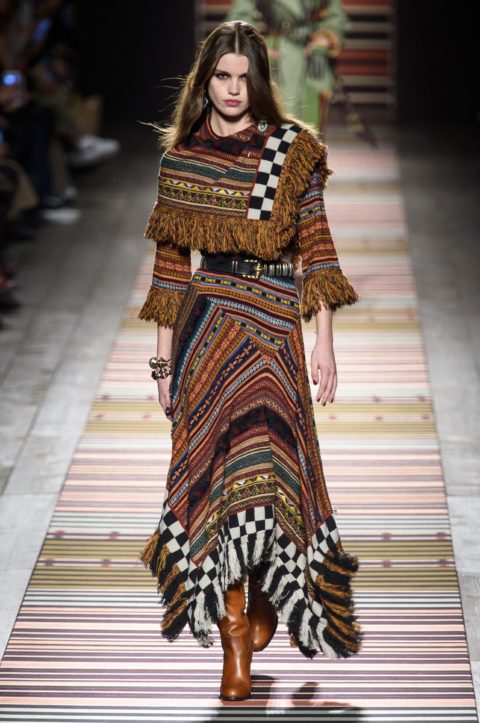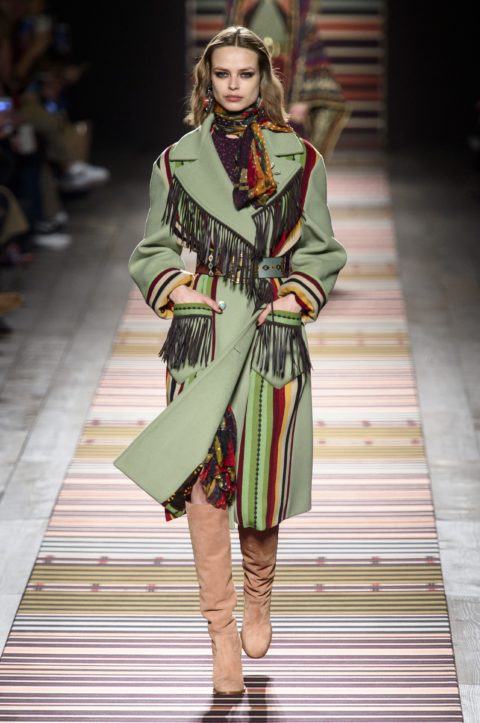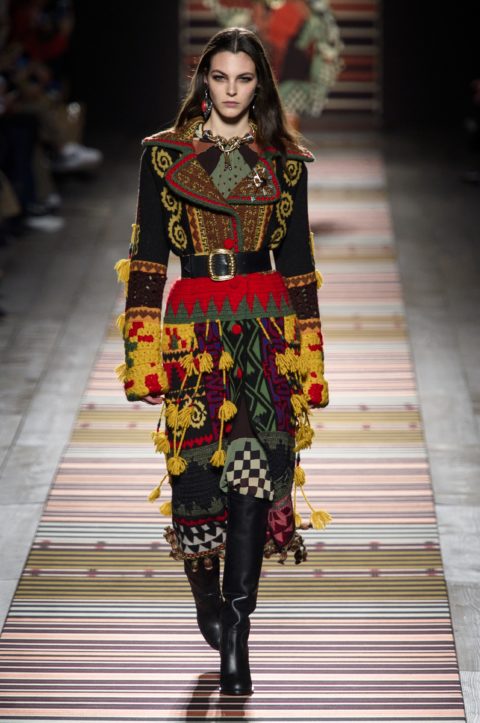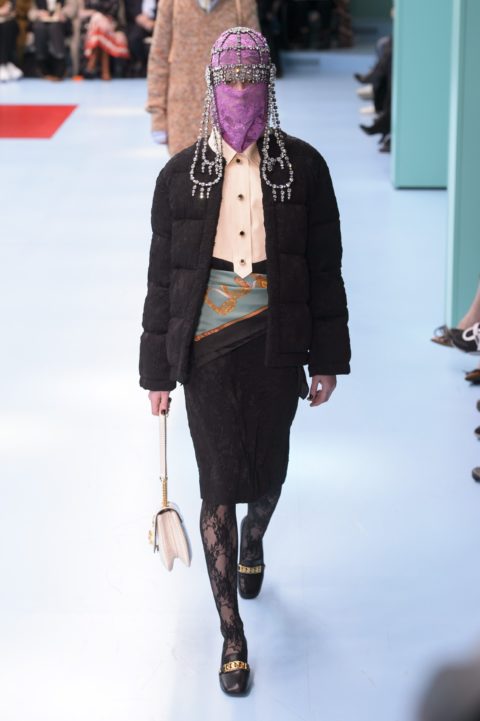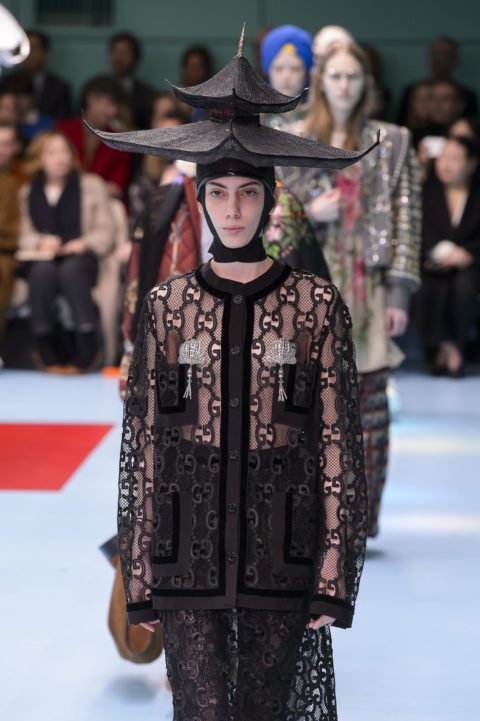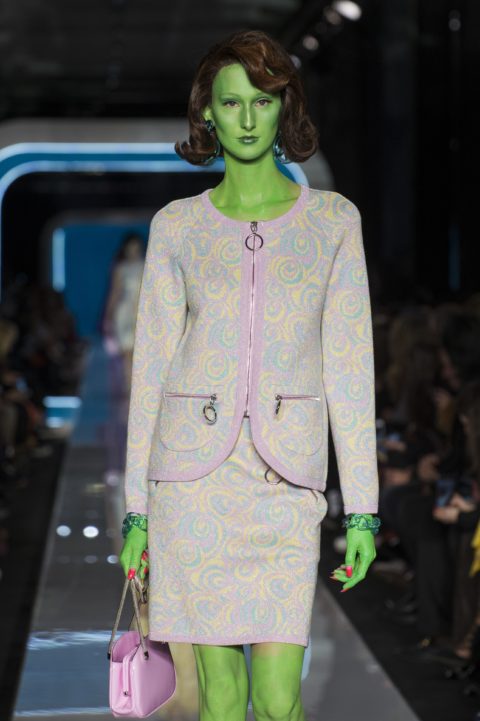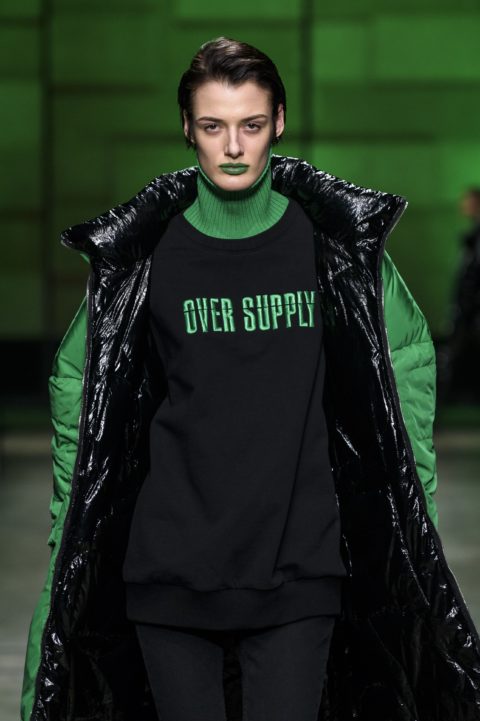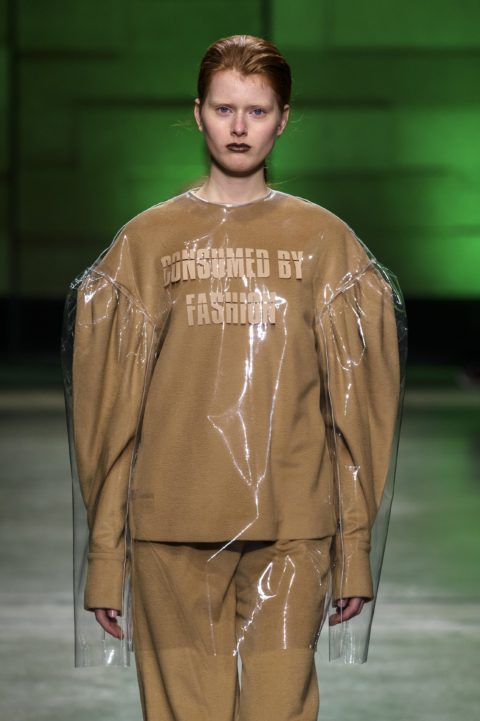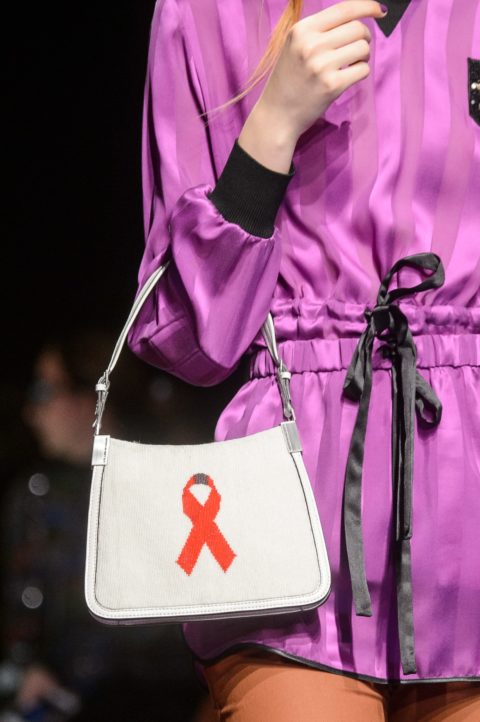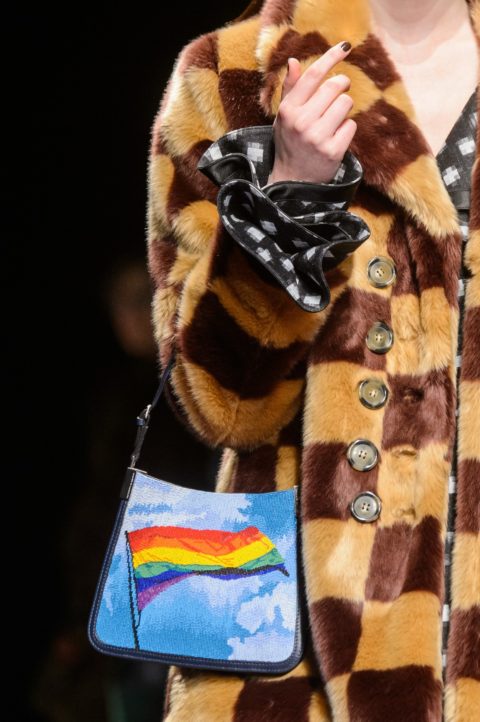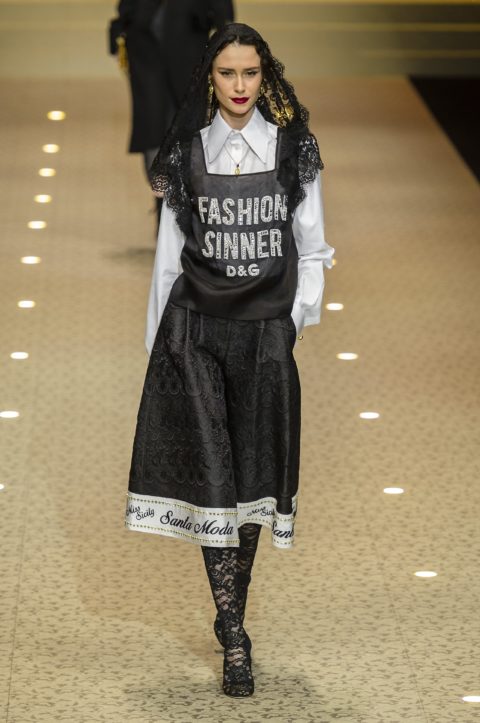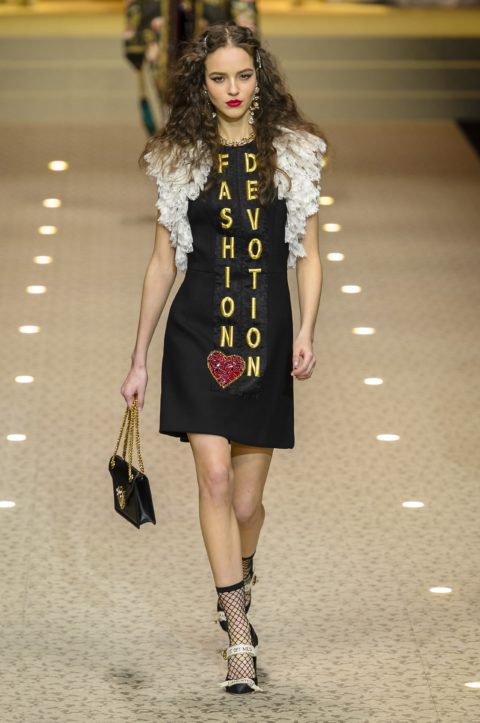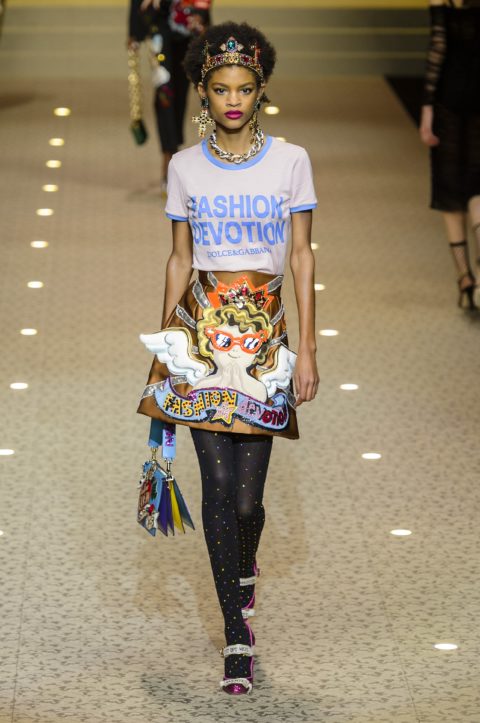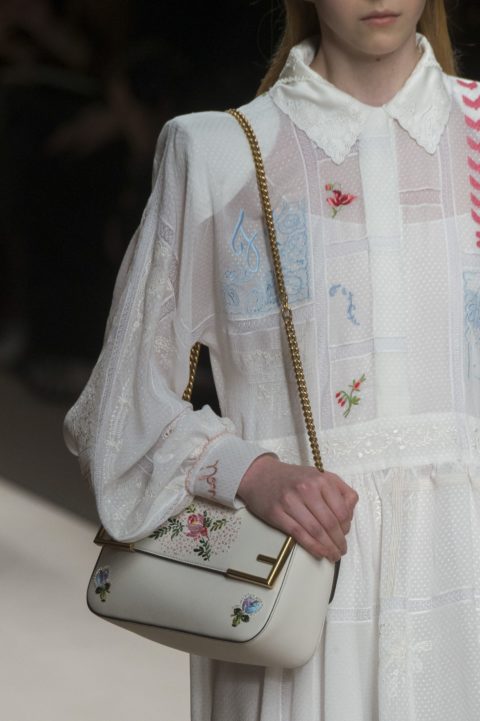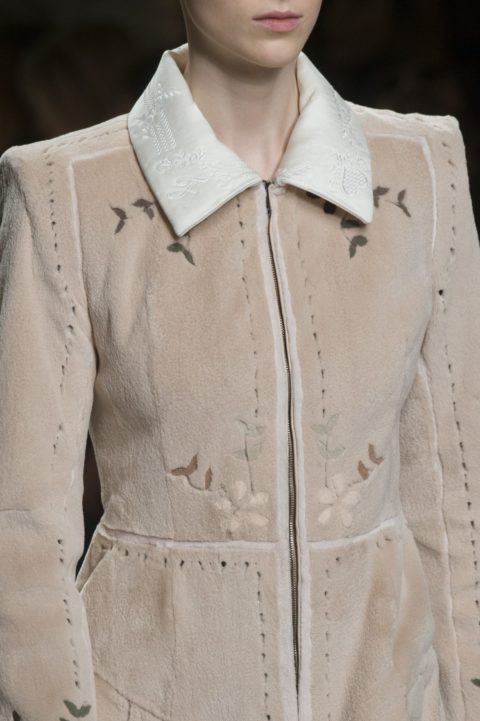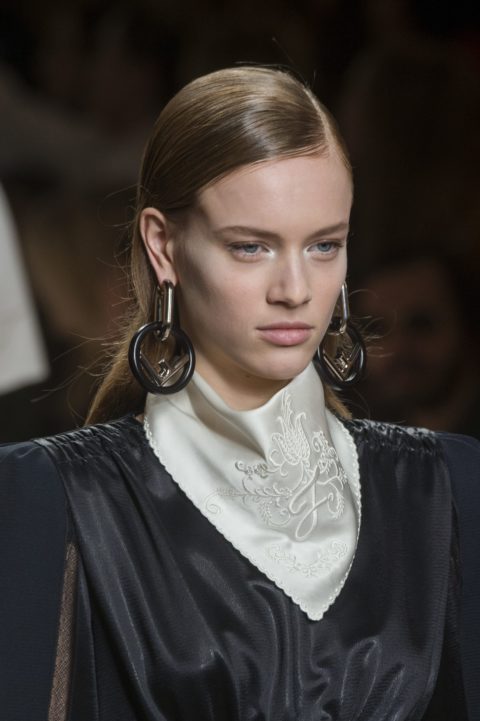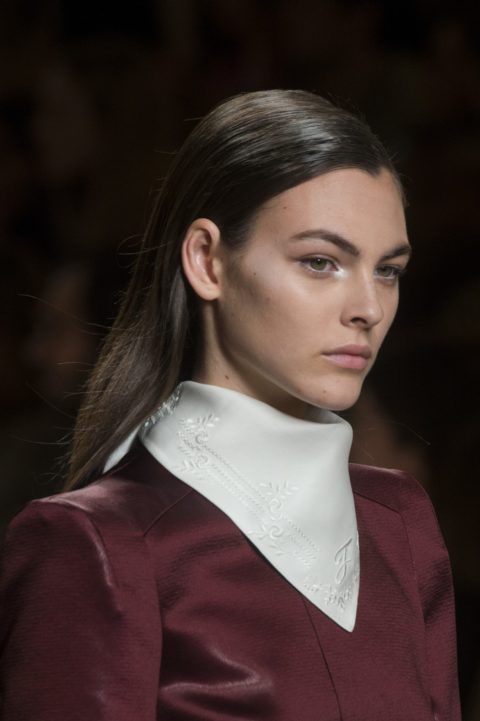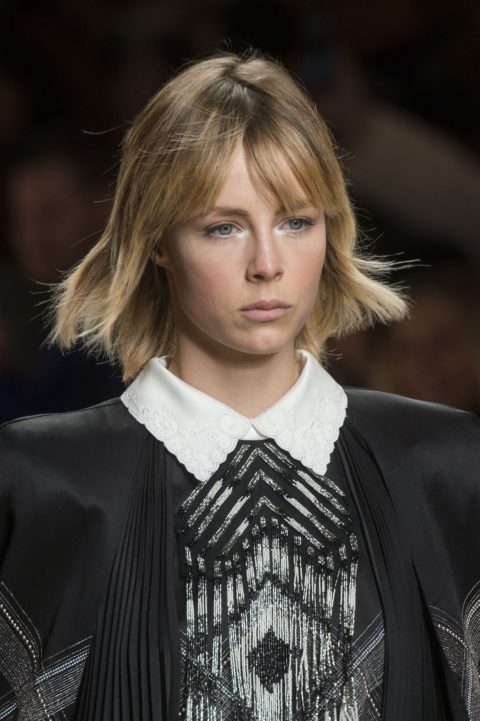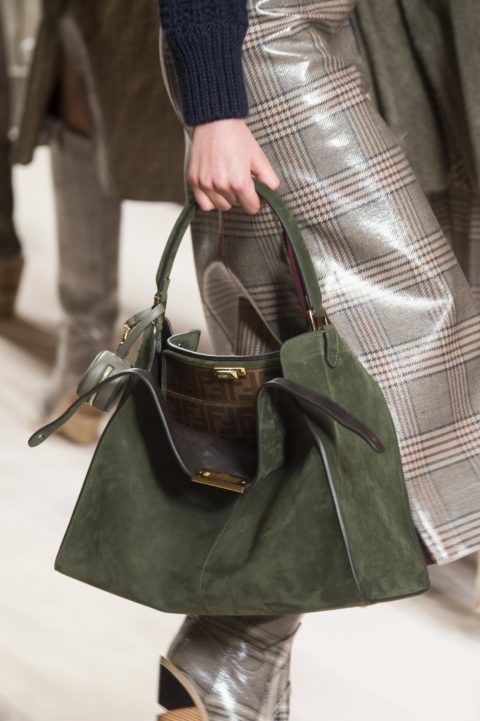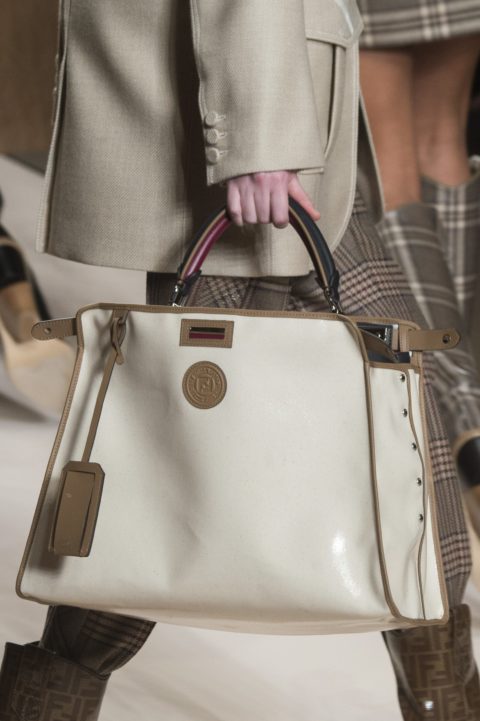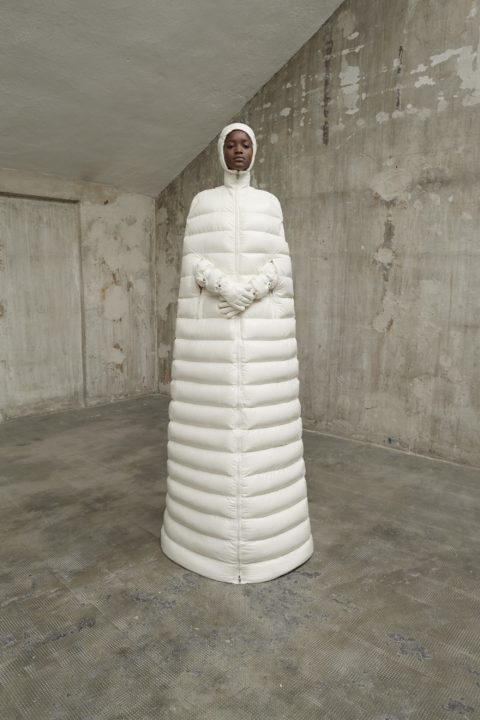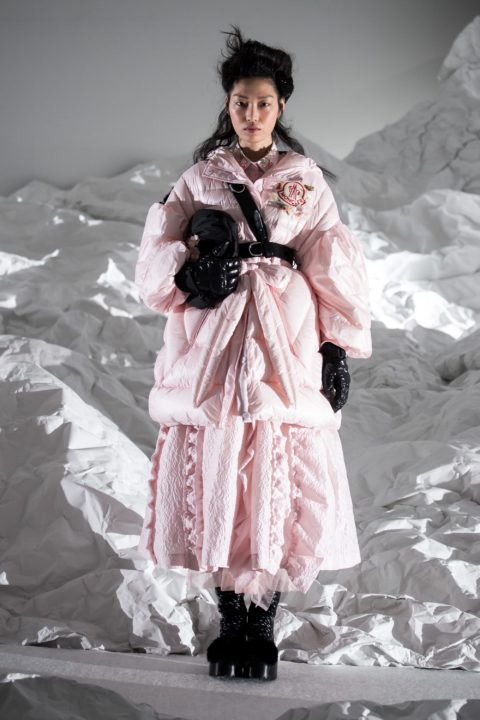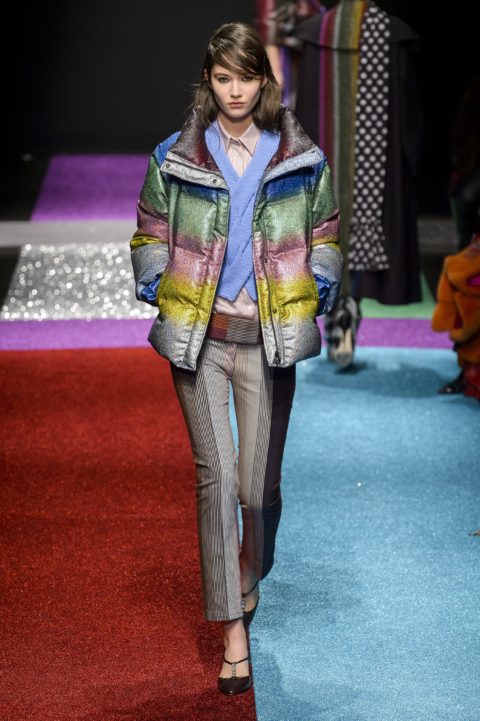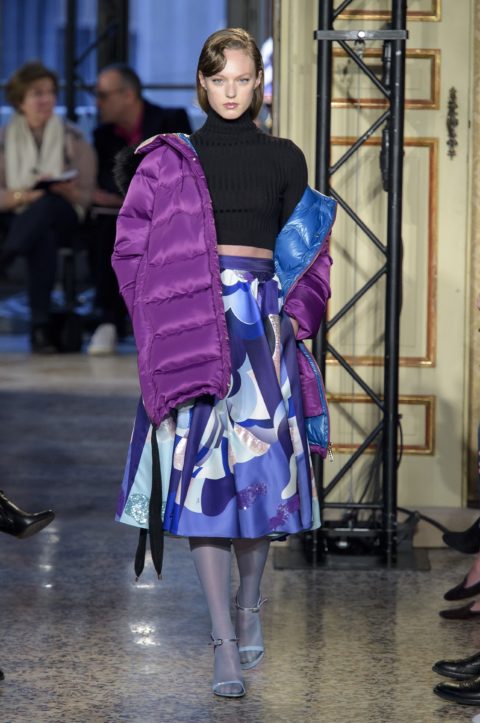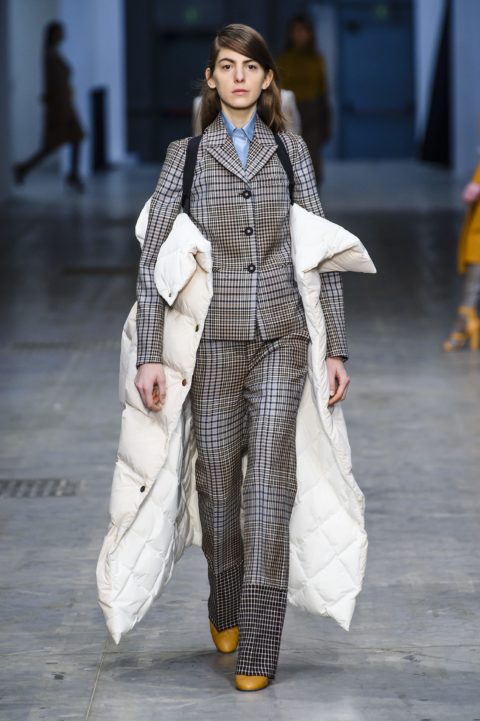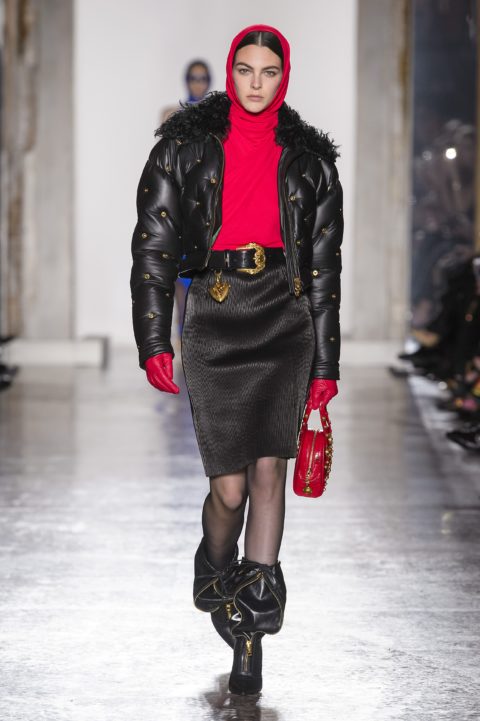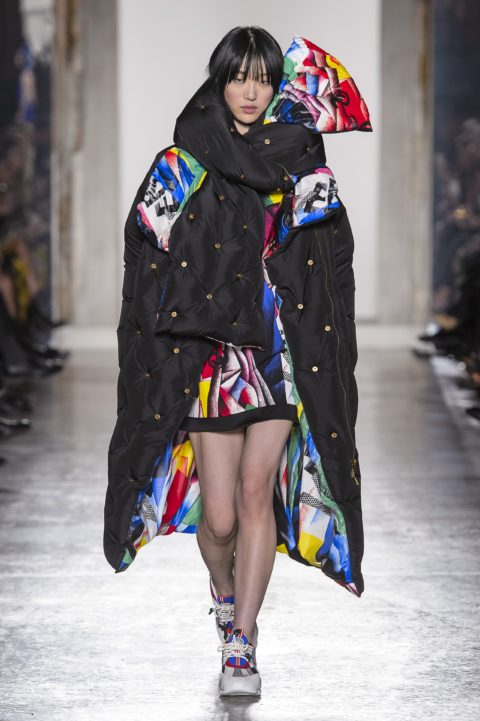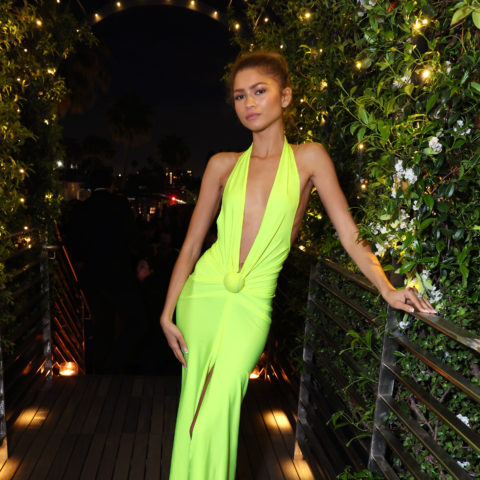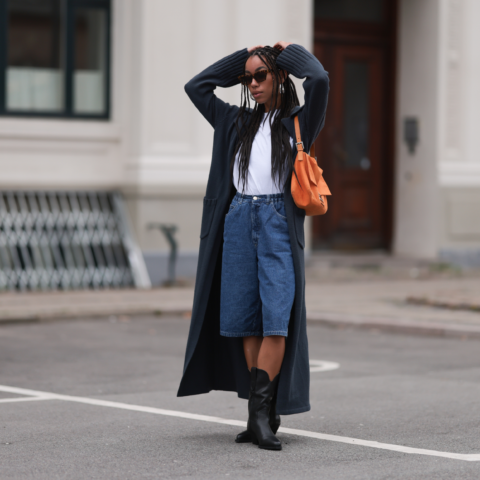Milan Fashion Week: Does “Ethnic Futurism” Mean Cultural Appropriation Isn’t Relevant Anymore?
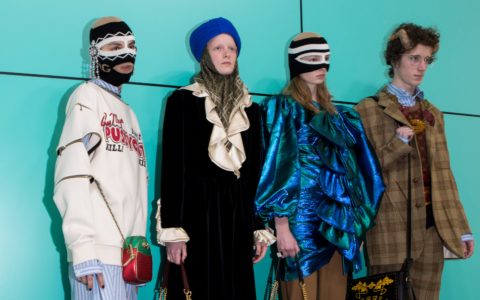
At the surface level, the trends coming out of Milan Fashion Week Fall 2018 were: power suits, flared pants, bright pops of primary colours, capes, anoraks and puffer jackets. But many of the designers also explored deeper cultural ideas and sentiments reflective of these #metoo times. It was all about women taking back the night and feeling empowered and safe at Prada and Missoni. Other designers delved into what our supposed post-human, post-truth and post-identity world might look like. (Or at least what we might be wearing!) In the midst of this futuristic outlook, the nostalgic inspiration at Fendi tethered these brave new world ideas with some old world charm. Finally, I included some of my favourite puffers to showcase how inspiring it is when designers transform a quotidien piece of clothing into something OTT fabulous.
1. Ethnic futurism
I love it when a fashion designer coins a term that resonates or captures a mood you’re sensing but perhaps don’t exactly know how to put into words. Veronica Etro described her collection—one that intriguingly blended patterns that may have been Navajo, Peruvian or even Patagonian—as “ethnic futurism.” Is this the next step in the evolution of identity politics, and, if so, how does this influence our understanding of appropriation? It was a sentiment that Alessandro Michele boldly explored in his Cyborg collection. Aside from the seriously creepy replicas of severed heads and baby dragons, there was a mélange of cultural and religious references, from bindis, hijabs and niqabs to third eyes. But it was his choice of headgear—Russian babushka headscarves, Sikh-like turbans and a pagoda hat—that perhaps most expressed his interpretation of ethnic futurism. At a press conference after the show, Michele said that we’re at a point in history where we’re liberated from our natural condition, adding we can now “decide what we want to be.” He suggested this was a sign of the “post-human” era we’re entering and we’re now the “Dr. Frankenstein of our lives.” Not everyone has embraced this idea of ethnic sampling being about self-determination versus appropriation. Reaction to Michele’s Sikh-like turbans was swift, after Canadian actor and model Avan Jogia posted this tweet: “Yo… @gucci … I mess with you guys… but this isn’t a good look for you… could you not find a brown model?” FASHION’s associate editor Pahull Bains—who is from India— described the move as “tone-deaf and tasteless,” adding that “if we take Alessandro Michele at his word—that he wanted to create post-identity specimens by splicing and borrowing and mixing from a range of cultures—why were there barely any models of colour in his lineup?” On that note, see point 2.

2. Role models
When the first model appeared on the Prada runway, my seatmate gasped—with surprise and delight. “Wow! She’s opened with a black girl!” she said. Anok Yai, a Sudanese model, who was wearing a sleek, futuristic-looking puffer, was the first black model to open a show since Naomi Campbell did so in 1997. (After that, it wasn’t until 2008 when Jourdan Dunn appeared in the lineup for the influential house.) Yai told Vogue it was an honour to be chosen, adding that this moment was bigger than her. “Me opening for one of the top fashion houses is a statement to the world that black women’s beauty is something that deserves to be celebrated.”

Other notable moments…
Robots haven’t replaced humans just yet, but drones carrying jewel-encrusted handbags at Dolce & Gabbana may be the beginning of a runway-robot invasion. (A drone also appeared at Prada. It was hovering—almost menacingly—outside the floor-to-ceiling windows filming the show inside.)
3. Still (colourful) waters run deep…
The invitation for Moschino’s show arrived packaged in a box of Crazy Fruit candies. Those neon-coloured sugar bombs ended up saving me from many low-glucose moments as I ran from one show to the next. When I saw the first model on the ’60s-inspired Marilyn/Jackie duo collection, I assumed that the green tint of her face was to suggest she had over-indulged (like me). Later I learned, via Vogue, that she was an alien-Jackie look-alike. Apparently Jeremy Scott was inspired by a JFK conspiracy that involved President Kennedy telling Monroe that aliens were real. When she hinted that she was going to go to the press, she was killed. Aside from that colourful (literally) take, it was Scott’s clever way of expressing his disconnect with Donald Trump’s stance on illegal aliens. He wasn’t the only designer to use this global platform to make a statement. At Annakiki, designer Anna Yang addressed the issue of sustainability in the fashion world. A few of the pieces featured the slogans “over supply” and “consumed by fashion.” In her show notes, she suggested we’re suffering from “aesthetic fatigue” and “fashion excess.” “While global clothing sales are estimated to reach 160 million tons in 2050, more than three times today’s amount, the planet simply cannot sustain the level of pollution, carbon emission and water usage,” she wrote. “An insatiable desire for the next big thing has resulted in an excess of trends changing faster than we can keep up with. As a result, we have aesthetic fatigue.” To address this, Yang produced fewer pieces and used fabric collage techniques and two-in-one designs. “The focus is on craftsmanship, elegance, authenticity and longevity.” For Marco De Vincenzo, it was all about unplugging—a sentiment he expressed with sparkly “no signal” slogans on shirts. He also created statement bags with the LGBTQ+ rainbow and HIV-awareness red ribbon. Other honourable “slogan” mentions go to Dolce & Gabbana for its “fashion sinner” and “fashion devotion.”
4. It’s all in the details…
The Fendi collection—which was definitely one of my favourites—was modern yet retro. The tailoring was exquisite, and the silhouettes captured the new spirit of power dressing that we’re seeing this season. But it was at the re-see a day later that I noticed the nostalgic handkerchief details in the embroidered silk neckerchiefs, white collars and scallop-edged finishing. Karl Lagerfeld told the press that his vast collection of antique table and bed linens inspired him, adding that even as a boy he always felt that fresh white linen was the height of luxury. I would have to agree! (I also loved the the new super-light Peekaboo bag and the brilliant protective Peekaboo covers.)
5. Puff the magic fashion dragon…
The stylish grey wool car coat I brought to wear in Milan clearly wasn’t going to protect me from the elements. (It snowed one day!) After spending Day 1 freezing, I relented and switched to my Uniqlo black puffer. It was functional and warm but not especially inspiring after I saw these puffers for Fall 2018. At Moncler, there was the futuristic “puffer-nun,” which was designed by Valentino creative director Pierpaolo Piccioli, as well as the Victorian-like ski queens by Simone Rocha. (Both designers are part of Moncler’s innovative Genius project.) Then there was Marco De Vincenzo’s sparkly interpretation and Pucci’s gorgeous purple puffer. There’s no excuse to default to basic black come fall! (See below for more coats that will help you up your puffer game.)

